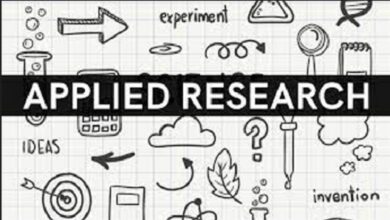What is content analysis/Features/How to do content analysis
What is content analysis?
Content analysis is a method of analyzing qualitative research data . In other words, it is a method for analyzing data that describe and illustrate reality, but that cannot be quantified.
This means that content analysis is used to analyze, for example, documents such as interviews, field diaries or videos.
Among the main researchers on this topic , it is possible to highlight Laurence Bardin. That’s because Bardin has written an exclusive book about the method.
In the book Content Analysis , Bardin introduces the concept of content analysis as follows:
It is a set of communication analysis techniques, which employs systematic and objective procedures for describing the content of messages.
The focus of content analysis is to verify the semantics of the data. In other words, research aims to understand the true meaning of a text.
Features of content analysis
The main features of content analysis are:
- Its purpose is to seek the true meaning of a message
- Compares messages considering different receivers or different situations involving the same receivers
- Orients itself from standardized messages
- Its purpose is to find an objective, systematic and qualitative description
How to do content analysis?
We have prepared a step-by-step guide to help you with content analysis. Come on?
1. Material pre-exploration
In the first step, you must read and organize all data material. It’s the stage where you start to understand the main ideas and organize them.
But it’s not time for systematization yet, okay?
Bordin identified three activities for this organizing phase:
- Take floating readings – which is the first contact with the data collection documents
- Constitute a corpus – which is a complete collection of all information on the topic
- Formulate content hypotheses – here you can suggest explanations and arguments
In addition, when organizing all documents, you should take care to adhere to the following principles:
- Principle of completeness: not to leave any document out
- Representativeness: possibility of understanding all possible situations and hypotheses (generalization)
- Adequacy: it is important to fulfill the objective and serve to answer the research problem
2. Exploration of the material
In the second step, you must select the units of analysis. This means choosing, among all the material, words, phrases, paragraphs or topics that are of interest to the research.
At this point, you should also consider any events, objects, and characters that might influence the analysis. This process is called encoding.
Furthermore, one must classify the constitutive elements of a differentiation set. In other words: one must look at the registration units and transform them into categories.
This means grouping recording units that have similar characteristics. The categories must be defined objectively and consistently.
This grouping can be done in four different ways:
- Semantic – from the meanings of codes
- Syntactic – from the organization of the sentence structure
- Lexicon – referring to the position of words
- Expressive – through what the person who sent the message meant
There is no magic formula for defining job categories. For this, one must consider the theoretical foundation and the theme of the work.
3. Treatment and interpretation
The time has come to make an effort to really understand the data collection material in depth. And for that, it is necessary to reach some conclusions.
This does not mean creating a random guess. But to seek a basis in theories and in the reality of concrete facts, from who produced the message and who received it.
So, to make the interpretation, it is necessary to consider the following variables:
The inference must identify some characteristics of the message. This procedure happens as follows:
- Who? (The source of the message – who sent it)
- Because?
- Which? (the message itself)
- With what effect? (decoding process)
- For whom? (receiver)
The main analysis and interpretation strategies are:
- Pairing: referring to the comparison of data
- Historical analysis: how the phenomenon behaved over time – what has changed? what stayed the same?
- Construction of an explanation: explanation of meaning units

